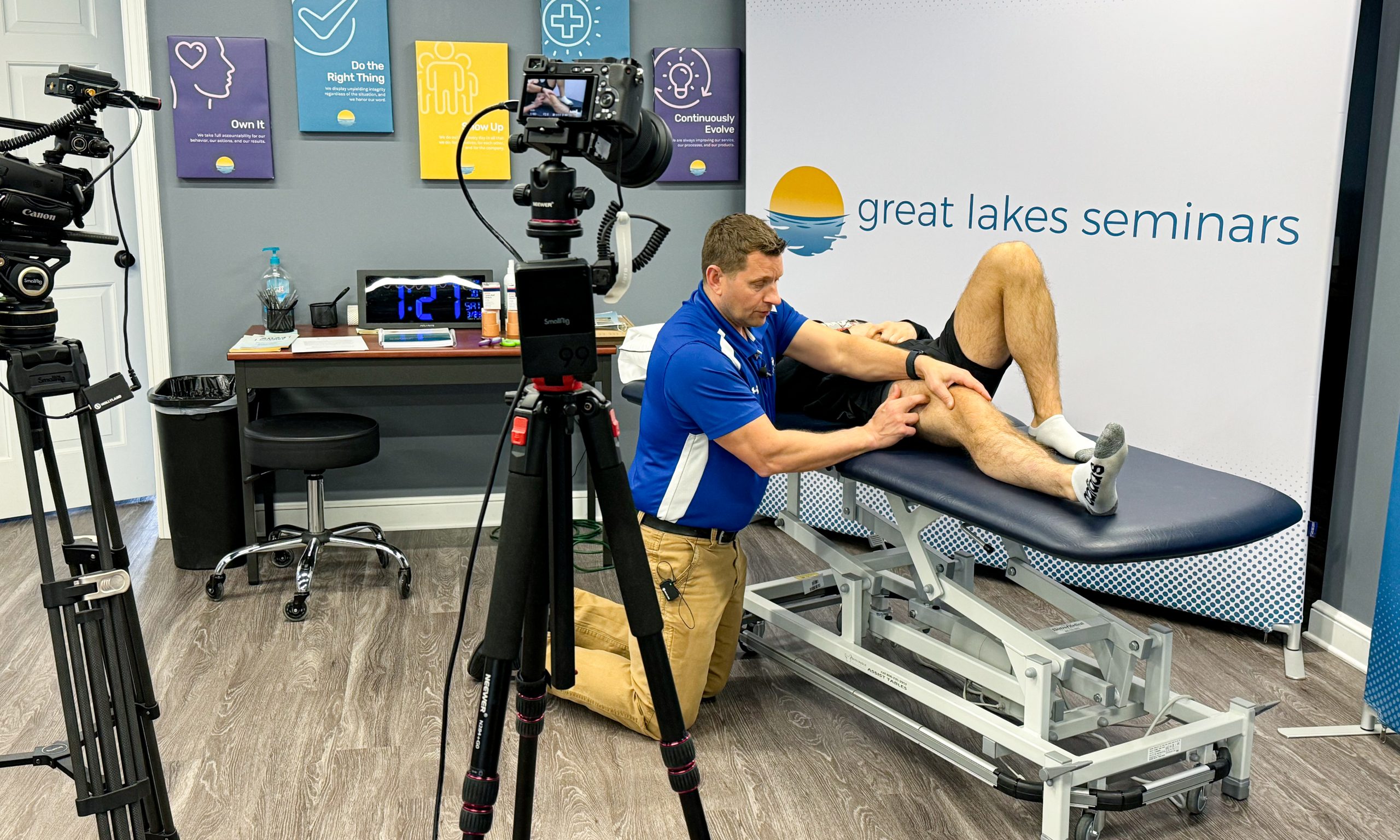How the CIMT Certification Transformed My Practice: Brett's Journey

As physical therapists, we all strive to provide the best possible care for our patients. For Brett, becoming a Certified Integrated Manual Therapist (CIMT) through Great Lakes Seminars was a game-changer. His journey through the certification process not only expanded his knowledge but also transformed the way he approaches patient care.
Why Brett Pursued CIMT
“One of the main reasons I wanted to get my CIMT was to improve my ability to treat both basic and complex cases,” Brett explains. While he felt comfortable handling straightforward cases, the more unusual patient presentations often left him searching for answers.
When faced with challenging cases, Brett would turn to the experienced physical therapists in his company for advice. “They would tell me to check certain things, and at first, I would wonder how that even made sense,” he recalls. “But once they explained it, I realized they had a deeper level of knowledge—one they had gained through Synthesis.”
Synthesis, the final course in the CIMT certification process, became the logical next step in Brett’s professional development. “I wanted to be the kind of physical therapist that others could turn to for answers,” he says. “Getting my CIMT gave me that confidence.”
Key Takeaways from Synthesis and GLS Courses
Through the CIMT program and the Synthesis course, Brett gained invaluable insights that have reshaped his practice.
A Strong Knowledge of Anatomy is Underrated
“If you don’t know a structure exists or how to locate it, you can’t test it to determine if it’s contributing to the patient’s condition,” Brett emphasizes. Mastering anatomy allowed him to assess and treat more effectively.Muscle Function vs. Muscle Action
“What we learn in school about muscle action doesn’t always align with how muscles function in real-life movement patterns,” Brett notes. Understanding true muscle function helps identify disorders, pain patterns, and movement dysfunctions, ultimately improving patient outcomes.
How CIMT Transformed Brett's Approach to Patient Care
Since completing the Synthesis course, Brett has found a renewed enjoyment in treating patients. “I feel like I have the knowledge to treat just about anything—I just need to apply it at the right time,” he shares.
Before, he would sometimes feel frustrated when a patient wasn’t progressing as expected. Now, instead of focusing solely on symptoms, he digs deeper: “I ask myself what I might be missing or what I need to assess next. I’m not just treating symptoms; I’m identifying and addressing the root causes.”
This shift in mindset has led to better patient outcomes and greater professional satisfaction. “I feel like I’m giving my patients better care than ever before,” Brett says.
Final Thoughts
Brett’s journey through the CIMT certification is a testament to the power of continuing education. By expanding his knowledge and refining his approach, he has become a more confident, effective therapist—one who can not only navigate complex cases but also support his colleagues in their growth.
If you’re considering CIMT, Brett’s experience highlights why it’s worth the investment and time. Through GLS courses, you’ll gain the tools to think critically, treat effectively, and provide the best care possible for your patients.
Questions? Check out these FAQs!
CIMT stands for Certified Integrated Manual Therapist. It’s a structured certification program through Great Lakes Seminars designed to help physical therapists integrate advanced manual therapy, clinical reasoning, and movement-based approaches into their practice.
Most therapists complete the CIMT in about 2-3 years, depending on how quickly they progress through the required courses and testing. You can move at your own pace based on your schedule and goals.
The CIMT consists of a series of core manual therapy courses, elective options, and the final Synthesis course, where you’ll bring all your skills together in an integrated, case-based format. Nine prerequisite courses need to be completed before attending the final certification course, Synthesis.
As Brett shared in his story, Synthesis is where everything “clicks.” It challenges you to apply what you’ve learned across multiple courses to real-world patient scenarios. Many therapists find it builds confidence and solidifies their problem-solving abilities for complex cases.
CIMT graduates often describe a complete shift in their clinical reasoning. Instead of chasing symptoms, they identify and treat root causes with confidence. Like Brett, many find they’re able to handle complex or unusual cases more effectively—and enjoy their work even more.
No, there’s no required order for the CIMT prerequisite courses. You can take them in any sequence that fits your interests and schedule.
You can explore the CIMT certification page here: https://glseminars.com/courses/view-course-info/synthesis/
If you’ve already taken a few GLS courses and want to know how far along you are in the CIMT certification process, send us an email at info@glseminars.com! We’ll let you know exactly which prerequisite courses you’ve completed and which ones you still need to finish your certification.
Share this article:

